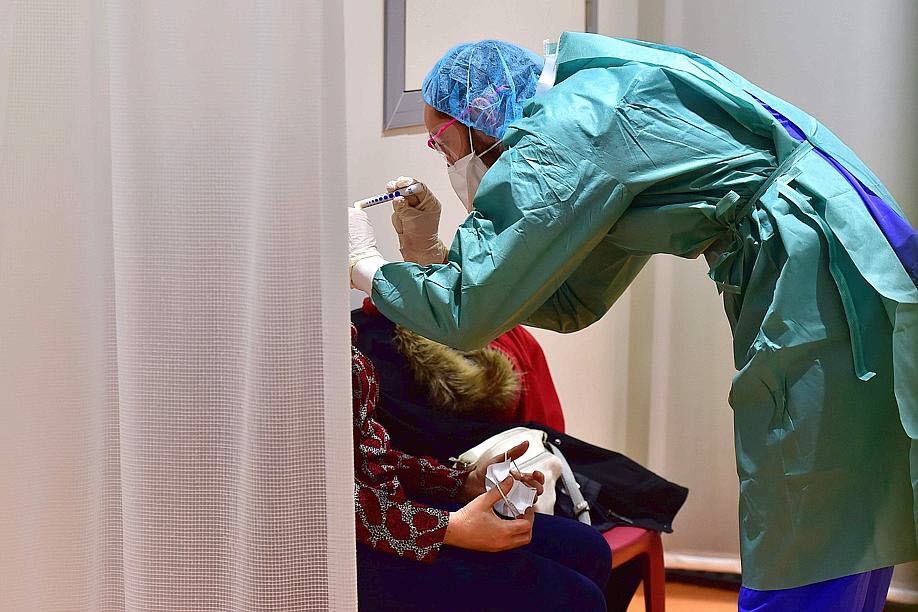Doctors’ dilemma at heart of coronavirus treatment
https://arab.news/r5dcx

While there have been great advances worldwide in widening the scope of medical care coverage, the coronavirus pandemic has demonstrated that disparities still exist in access to such care, not only between rich and poor countries, but also within countries, regardless of their development levels.
What the pandemic has also shown is that equal access to medical care is essential to protecting everyone’s health. If the disease becomes endemic to one country or group of countries, it could, over time, spread to the rest of the world, costing more in lives and money than if it were adequately dealt with before it spread. The same is true if a particular region in a country, a neighborhood within a city or a single social group was not given adequate health care.
The main issue is the rising cost of medical care, which also applies in the care of coronavirus patients. For example, in the US, health care spending has been growing at about 5 percent annually. In 2018, Americans spent about $3.6 trillion on health care, or $11,200 per person. Health spending accounts for about 18 percent of gross domestic product. While the US figures are relatively high, health spending is growing fast in other countries too.
Millions of people get sick and die every year all over the world, but the burden falls disproportionately on poor countries and poor families. Take tuberculosis (TB) as an example. According to the World Health Organization, in 2018 about 10 million people fell ill with TB and 1.5 million died from it, most of them in poor countries. The story is similar for other diseases.
We have come to accept without much thought the fact there is disparity between poor and rich countries. However, such disparities are most glaring when observed within rich countries. In their coronavirus coverage, US media outlets have reported on the disproportionate rate of infections and deaths among African Americans, for example. There have also been reports of coronavirus patients being turned away from private hospitals for lack of insurance.
With limited funding, which is stretched thin amid the coronavirus pandemic, medical practitioners have had to ration the provision of care to patients. Detailed guidelines have been given to doctors for triage. Those guidelines typically assign a triage officer or a triage committee, who do not have direct contact with patients, to decide who gets a ventilator or a specific procedure, not the attending physicians. Basically, those who are most likely to survive will get the ventilators.
In an email leaked to the press, a New York hospital encouraged its medical staff to do more aggressive triages. While physicians in general privately endorse such an approach, some of them have also supported it publicly. One doctor tweeted: “For the critically ill, vented, those with severe abnormalities, elderly — we need to be humanistic, but also realistic about the outcomes they face.” He was referring to the low chances of survival of high-risk patients and, as such, they should be given a lower priority to receive medical care.
In reality, such decisions are made quite frequently all over the world, mainly in public hospitals. When decisions are made on solid medical grounds, few people would object. However, it is quite often the case that those with the right connections get priority in terms of admission to the facility and the level of care they get.
In private health care facilities, access is based largely on the ability to pay. It is routinely denied to those without insurance and, among the insured, there is a hierarchy based on the level and cost of the insurance premiums paid. In case of shortages or congestion, triage is also applied, with self-policing by the private facility.
With limited funding, medical practitioners have had to ration the provision of care to patients.
Abdel Aziz Aluwaisheg
These triage issues have been around for some time, and occasionally they cross economic, ethical and social lines. In 1906, the Irish playwright George Bernard Shaw drew attention to these conflicts in his play “The Doctor’s Dilemma,” which is about a physician who has developed a revolutionary new cure for TB. The doctor’s private medical practice could only treat 10 patients at a time, so, from a group of 50, he selected the 10 he believed he could cure and who were most worthy of being saved, based on his sole judgment. However, when approached by an attractive woman, he agreed to add one more patient. Then, when an old friend and colleague also needed treatment, the doctor had to choose between the two cases. It boils down to making a judgment on who should live and who should die.
Despite the moral and emotional complications of the play, Shaw made it clear in his (very) lengthy preface that he was in support of a public health system, where everyone was treated equally regardless of their class or fortune. While the story was written more than a century ago, the theme remains relevant today. There are and will always be treatments that are so scarce or costly that some people can have them while others cannot, for financial, political, social or purely medical reasons. It can be said that a society can be measured on how it chooses to solve this dilemma and how it cares for the vulnerable, weak and powerless.
- Abdel Aziz Aluwaisheg is the Gulf Cooperation Council’s assistant secretary-general for political affairs and negotiation, and a columnist for Arab News. The views expressed in this piece are personal and do not necessarily represent those of the GCC. Twitter: @abuhamad1









































